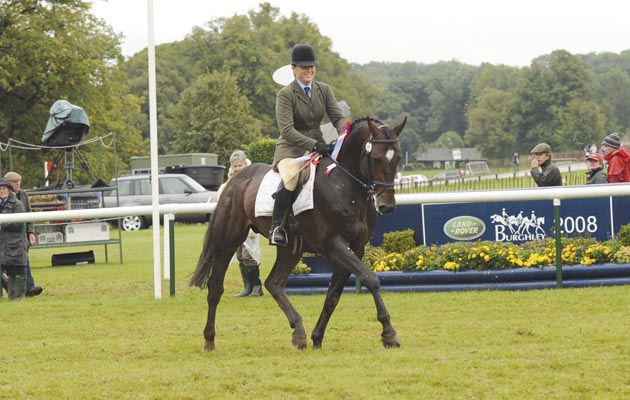Is four too young for horses to event? Leading rider Oliver Townend has called for an end to eventing four-year-old horses.
At a breeders’ seminar held last month (23 March) by Cheshire-based Harthill Stud, of which he is a co-founder with showjumper Nina Barbour, Oliver stressed that “four-year-old eventing should be banned” and that horses should be given more time to develop.
“I just don’t think it is of any benefit to what we are supposed to be doing — which is producing top-class event horses,” he told H&H.
“However, I don’t think five-year-olds are really ready to event either. Young horses would be much better spending two years showjumping before going eventing.”
However, not everyone agrees with Oliver.
Ginny Turnbull won the four-year-old final at the British Eventing Young Horse Championships at Osberton last year with Jolie Lark (pictured top). She also rode two other horses into the top 10 in the same class — Par Avion was fourth and Seapatrick Narco was ninth.
“Not all four-year-olds are ready to go eventing, mentally or physically,” she said.
“But what they are asked to do needs to be kept in perspective — they are allowed to do a maximum of three events, plus the final, over an untimed course of 90cm. You are essentially trotting round.”
Ginny had eight four-year-olds in her yard last year — four evented and four didn’t.
“The ones who did were ready to do so and definitely benefited from it, because they came on a lot,” she added. “I don’t think you can generalise about it.”

Oliver Townend riding four-star campaigner Armada
Leading eventers more like show ponies?
Oliver has also criticised the Burghley young event horse (BYEH) series. He said that although the classes are “commercially a very good idea”, he questioned the type of horse doing well in them.
“I saw the top 10 doing their final gallop at Burghley last year and there was only one real eventer in there,” he said.
“The classes have become a completely separate world to eventing — those horses are like show ponies. They look like showjumpers but they don’t jump; they look like eventers but they’ve got no blood, so where do they go?”
He suggested that part of the judging criteria needs to be the percentage of thoroughbred blood the horse carries, or horses in the pedigree who have already been successful.
“People ride horses with good jumps in young horse classes and say they’ve got a top-class eventer — they haven’t,” he said. “They’ve got something with scope and riders get confused when they are riding a warmblood without enough blood for eventing.”
Young horse producer Judy Bradwell told H&H she didn’t agree.
“I’ve won a BYEH and done well at it with lots of horses which have gone on to be successful eventers,” she said.
“The BYEH classes have been beneficial for their education and made them more mature. Yes, occasionally you get a very warmblood-type winning a qualifier, but those get sieved out at the final. But there are more warmbloods than thoroughbreds going into eventing now, so there are more of that type around than there used to be.
“There is now a mark awarded for type at the final. And it’s about getting the right judges — the conformation judges have to be practical and use their common sense.”

Young Horse Championship winners
However, Burghley event director Liz Inman told H&H there are “numerous reasons “ why, apart from breeding, a horse’s potential to move up the eventing ladder, at whatever level, might not be proved, such as through injury or being sold.
“Of all the four-star horses in the world, only a relatively small percentage would have competed in these classes. So, taking all of this into account, the following statistics would point to a degree of success in these classes identifying horses with the necessary talent,” she said.
“In an earlier five-year period (chosen for the horses to be now between the ages of eight and 12), 352 horses made the final, and of these, 12% are competing at three-star level and 3% at four-star level.
“Prior to this, there have been others who have gone on to achieve success at four-star and championship level, including Primmore’s Pride, Miners Frolic and more recently Billy Beware, who all featured at the finals.”
A ‘shop window’

Breeder and showjumper William Funnell, whose wife Pippa (pictured on Billy Be Cool) has consistently been successful at the BYEH final with horses bearing the prefix of their Billy Stud, said the company uses the BYEH four- and five-year-old classes as a “promotional tool” to show what they’ve bred.
“We really only take horses by our stallions to promote what we do,” he said. “Horses winning at three-star and four-star is the aim, not winning young horse classes — although they do serve a purpose as we need some sort of shop window.
“The less blood types with flashy movement show themselves better as four-year-olds — but they haven’t got the blood for eventing.”
Ref: Horse & Hound; 16 April 2015

